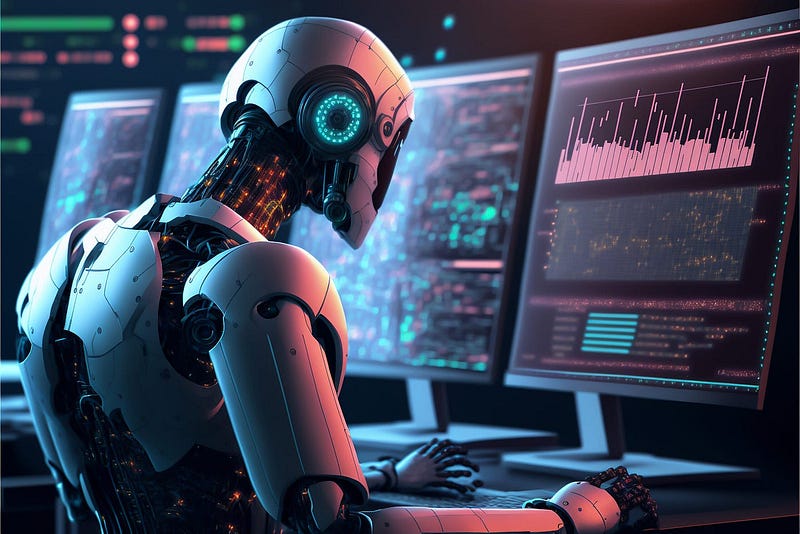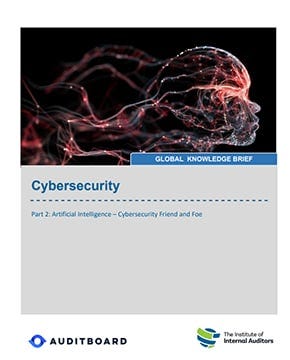Cybersecurity 2.0: AI in Cybersecurity, Friend or Foe?

Overview of Cybersecurity 2.0
In the ever-evolving digital landscape, Cybersecurity 2.0 signifies a transformative approach that encompasses advanced technologies and methodologies to protect sensitive information. It is characterized by a shift from traditional, reactive security measures to proactive strategies that anticipate and mitigate threats before they occur. This paradigm shift is largely driven by the increasing complexity of cyber threats, which have grown more sophisticated in their execution. Today’s cyber threats range from data breaches and ransomware attacks to more elusive tactics like supply chain attacks and social engineering. As organizations strive to safeguard their digital assets, the reliance on merely employing firewalls and basic antivirus software is no longer adequate. Cybersecurity 2.0 emphasizes:
- Real-time threat intelligence: Utilizing data analytics and machine learning to track and respond to potential threats swiftly.
- Continuous monitoring: Implementing systems that continuously dissect user behavior and alert teams of unusual activities.
- Automation: Streamlining processes to empower security teams to focus on more complex security concerns.
Significance of AI in Cybersecurity
Artificial Intelligence (AI) has become an integral player in the realm of cybersecurity, serving as a crucial asset for organizations navigating a complex threat landscape. Its ability to analyze vast amounts of data and learn from it allows for the detection of anomalies that may signal security breaches. For instance, imagine a financial institution utilizing AI for fraud detection. By continuously analyzing transactional behavior patterns, AI systems can flag suspicious activities with remarkable accuracy, significantly reducing the risk of financial loss. Key significance of AI in cybersecurity includes:
- Enhanced threat detection: AI algorithms can swiftly identify patterns indicative of potential threats that human analysts might overlook.
- Reduced response time: Automated systems can respond to threats at lightning speed, drastically improving incident response capabilities.
- Adaptability: AI continuously learns from new data, evolving its detection strategies as cyber threats become more sophisticated.
As organizations adopt Cybersecurity 2.0 frameworks, the intersection of AI and cybersecurity becomes increasingly vital, paving the way for a more secure digital future.

Evolution of Cybersecurity
Traditional Cybersecurity Measures
The journey of cybersecurity began with traditional measures that primarily relied on reactive strategies to counter threats. In the early days, organizations were equipped with basic firewall protections, antivirus software, and intrusion detection systems. While these tools provided a foundation for security, they often fell short in addressing the dynamic threats that plagued the digital world. For instance, a typical network security setup might have included:
- Firewalls: Acts as a barrier between trusted and untrusted networks, controlling incoming and outgoing traffic based on predetermined security rules.
- Antivirus software: Scanned systems for known malware and viruses, but struggled against new, unrecognizable threats.
- Password protection: Relied on users to create strong passwords, which often led to vulnerabilities due to weak or reused credentials.
Despite their importance, these traditional measures often resulted in a reactive mindset, only responding to threats after they had already wreaked havoc.
Integration of AI in Cybersecurity
As cyber threats have evolved, so too have the strategies to combat them. Enter AI, a game-changer that has revolutionized the approach to cybersecurity. By integrating AI, organizations now harness powerful capabilities that enhance their security posture. Imagine a scenario where a company utilizes AI-driven tools that analyze network traffic in real time. This technology can uncover patterns and detect unusual behavior, allowing security teams to respond to threats before they escalate. Key benefits of AI integration in cybersecurity include:
- Predictive analytics: Identifying potential vulnerabilities before they are exploited, allowing for preemptive actions.
- Automated threat response: Streamlining incident response processes, which helps minimize damage during attacks.
- Behavioral analysis: Understanding user behavior patterns facilitates the swift identification of anomalies linked to potential breaches.
With this progression, the synergy between traditional measures and AI-based techniques creates a robust, multidimensional security framework capable of addressing the complexities of today’s cyber landscape. This evolution marks a critical step towards establishing fortified defenses in an era dominated by cyber threats.

Applications of AI in Cybersecurity
Threat Detection and Response
As the sophistication of cyberattacks increases, the traditional methods of threat detection simply aren’t cutting it anymore. This is where Artificial Intelligence (AI) comes in, revolutionizing the way organizations approach cybersecurity. Through machine learning algorithms and predictive analytics, AI systems can analyze enormous datasets at lightning speed to identify potential threats. For example, imagine a financial institution that receives thousands of transactions every second. By employing AI-driven threat detection systems, they can instantly flag suspicious transactions based on pre-defined parameters. This proactive engagement not only minimizes losses but also enhances customer trust. Key applications of AI in threat detection and response include:
- Real-time monitoring: Continuous analysis of network traffic to detect potential threats as they happen.
- Automated incident response: Enabling immediate containment of threats, which significantly reduces the risk of data breaches or system failures.
- Enhanced accuracy: AI’s ability to differentiate between genuine threats and false alarms allows security teams to focus on critical issues without being overwhelmed by alerts.
Behavior Analysis and Anomaly Detection
Understanding user behavior is another critical application of AI in cybersecurity. Every organization has baseline user behavior patterns, and deviations from these norms can signal potential breaches. AI systems leverage behavioral analysis to classify normal activities and identify anomalies that may indicate malicious activities. For instance, if an employee usually accesses files during working hours but suddenly begins downloading sensitive information at odd hours, an AI-powered system can flag this behavior for further investigation. Key benefits of behavior analysis and anomaly detection include:
- Proactive threat indications: Identifying insider threats or compromised accounts before significant damage occurs.
- Efficiency in monitoring: Reducing the noise of trivial alerts by focusing on unusual activities that warrant attention.
- Adaptive learning: Continuously improving detection capabilities as the AI learns from new data inputs.
By harnessing these AI-driven applications, organizations can significantly enhance their cybersecurity measures, creating a more secure digital environment adept at combating today’s complex threats.

Challenges and Concerns
Potential Risks of AI in Cybersecurity
While the integration of AI into cybersecurity frameworks presents immense benefits, it is not without potential risks. Organizations must carefully consider these challenges, as an over-reliance on AI can lead to vulnerabilities in the security infrastructure. One major risk is the problem of false positives. AI systems, while advanced, are not infallible. They can generate alerts for benign activities, leading to alert fatigue among security teams. For example, an AI might flag a common software update as suspicious due to its atypical timing, thus diverting attention from real threats. Moreover, there’s the risk of adversarial attacks. Cybercriminals are becoming increasingly sophisticated, developing techniques to manipulate AI systems into misclassifying data. This can create significant vulnerabilities, as attackers can exploit these weaknesses. Key concerns regarding AI risks include:
- Data privacy: The vast amounts of information processed by AI systems can pose threats to user privacy if not managed correctly.
- Lack of transparency: Many AI algorithms operate as “black boxes,” making it challenging to understand how decisions are made, which can complicate accountability.
Ethical Considerations in AI Implementation
As organizations adopt AI in cybersecurity, ethical considerations also surface. How AI systems are designed and implemented can significantly impact user rights and privacy. For instance, the potential for bias in AI systems is a growing concern. If the training data used to refine AI algorithms is biased, it could lead to discriminatory practices, such as falsely flagging certain demographic groups as higher risks. Another ethical consideration is the balance between security and individual rights. Organizations must navigate the fine line of protecting their assets while respecting users’ privacy. Stringent monitoring of user behavior, while crucial for threat detection, can feel invasive if not handled transparently. Reflecting on personal experiences, many organizations have grappled with these ethical dilemmas. Discussions around transparency, inclusivity, and respect for user privacy are essential for creating AI systems that not only defend against cyber threats but do so in a principled and fair manner. Navigating these challenges requires a mindful approach to implementing AI in cybersecurity, ensuring that technology serves as a protector without compromising ethical standards.

Future of Cybersecurity with AI
Advancements in AI Technology
As we look toward the future, the advancements in AI technology are poised to reshape the landscape of cybersecurity fundamentally. With machine learning algorithms evolving at a breakneck pace, organizations can leverage these innovations to detect threats faster and more accurately than ever before. One exciting development is deep learning, which allows AI systems to interpret complex patterns in vast amounts of data. Think of it as giving AI a more profound understanding of cyber threats, enabling it to sift through not just transactional data, but also social media and dark web activities to build a comprehensive threat profile. Consider the following advancements shaping the future of AI in cybersecurity:
- Automated security operations: AI will be able to automate various security processes, allowing teams to focus on strategic initiatives rather than mundane tasks.
- AI-driven threat intelligence: Enhanced capabilities to predict and adapt to emerging threats by analyzing patterns across the digital landscape.
- Natural language processing: Improving AI’s ability to interpret and respond to human communication, which can streamline incident reporting and data analysis.
Role of Human Expertise in AI Cybersecurity
While AI brings remarkable efficiency to cybersecurity, the role of human expertise remains irreplaceable. Cybersecurity isn’t merely about technology; it’s about understanding the context in which these systems operate. Experienced security professionals play a crucial role in interpreting AI-driven insights and making informed decisions based on human judgment. For instance, while AI can flag unusual patterns, it still requires human analysts to deduce the intent behind those actions. A seasoned expert might recognize that a flagged login is legitimate but is simply a user traveling in a different time zone. Key aspects of human expertise in AI cybersecurity include:
- Contextual reasoning: Human analysts can provide valuable context that AI systems may overlook, ensuring a more nuanced understanding of threats.
- Ethical oversight: Seasoned professionals can guide AI implementations towards responsible and ethical practices, helping to mitigate risks around bias and privacy concerns.
- Strategic decision-making: Human input is vital in shaping cybersecurity strategies, adapting to an ever-changing threat landscape.
As AI continues to evolve, the most effective cybersecurity strategies will emerge from the synergy between advanced technology and human expertise. This dual approach will foster a security ecosystem that is both proactive and responsive, adequately prepared for the complexities of future threats.

Case Studies
Real-Life Examples of AI Implementation
As organizations increasingly recognize the value of AI in cybersecurity, several real-life examples demonstrate its successful implementation across various industries. One particularly noteworthy case is that of IBM’s Watson for Cyber Security. This powerful AI-driven system analyzes vast amounts of unstructured data, including security frameworks and social media conversations, to identify potential vulnerabilities and alert security teams to emerging threats. By leveraging natural language processing, Watson has helped organizations like Cytel, a global analytics company, streamline their threat detection processes, significantly improving their response times. Another compelling example comes from Darktrace, a cybersecurity firm utilizing self-learning AI technology. Their platform can autonomously detect and respond to cyber threats in real-time by monitoring user and system behavior. Darktrace has been successfully implemented by organizations like The UK’s Defence Science and Technology Laboratory (DSTL), which reported enhanced detection capabilities and reduced response times to incidents.
Impact of AI on Cybersecurity Effectiveness
The impact of AI on cybersecurity effectiveness is profound, reflecting substantial improvements in detection, response, and overall security management. With AI-powered systems, organizations can identify threats and anomalies at a scale and speed that human teams cannot match. Some notable effects include:
- Increased accuracy: AI reduces false positives significantly, allowing security teams to focus on genuine threats. For example, Darktrace claims a 95% reduction in false positives for their clients, translating to fewer disruptions.
- Faster mitigation: Automated responses from AI-driven systems facilitate immediate action, limiting potential damage during an attack. According to industry reports, organizations using AI can respond to threats up to 60% faster than those relying on traditional methods.
- Cost efficiencies: By automating routine tasks and enhancing efficiency, organizations can lower their operational costs. Businesses that adopt AI in cybersecurity often see ROI within the first year through reduced breach costs and improved resource allocation.
These case studies underline the transformative potential of AI in strengthening cybersecurity outcomes. As organizations continue to adapt and innovate, the role of AI will undeniably shape the future of threat detection and response strategies.

Recommendations and Best Practices
Implementing AI Safeguards in Cybersecurity
As AI becomes a cornerstone of modern cybersecurity strategies, implementing effective safeguards is crucial to ensure it operates optimally and ethically. Organizations should adopt a multifaceted approach to harness AI’s power while mitigating potential risks. Here are several best practices for implementing AI safeguards:
- Regular updates and maintenance: AI systems must be updated frequently to integrate the latest threat intelligence and machine learning advancements. Neglecting updates can leave systems vulnerable to emerging threats.
- Develop clear guidelines: Establish specific protocols for the use of AI in cybersecurity, ensuring that these align with the organization’s security objectives and ethical considerations.
- Pilot testing: Before full deployment, organizations should conduct pilot tests of AI solutions in controlled environments. This allows for the identification of potential issues and efficacy in detecting real-world threats.
For example, a leading healthcare provider conducted extensive testing of their AI-based intrusion detection system before a complete rollout. This approach allowed them to fine-tune the system, addressing biases that could misidentify legitimate patient access as a potential threat.
Training Programs for AI Security Professionals
The integration of AI into cybersecurity also necessitates comprehensive training programs for security professionals. As technology evolves, so too must the skill sets of the people managing these sophisticated systems. Organizations should consider implementing the following training strategies:
- Continuous education: Offer ongoing training on the latest AI technologies and threat landscapes, ensuring that staff remains adaptive to evolving challenges.
- Hands-on workshops: Incorporate practical exercises where professionals can engage with AI tools in real-world scenarios. This can greatly enhance understanding and preparedness.
- Collaboration with tech providers: Partner with AI solution developers to conduct specialized training sessions. For instance, many companies team up with cybersecurity firms to provide tailored workshops focused on their specific tools and processes.
Incorporating these recommendations not only enhances the effectiveness of AI in cybersecurity but also builds a robust workforce equipped to tackle emerging threats. By investing in AI safeguards and training, organizations can create a resilient cybersecurity posture that keeps pace with the ever-evolving digital landscape.

Conclusion
Balancing the Pros and Cons of AI in Cybersecurity
As the discussion surrounding AI integration in cybersecurity draws to a close, it is crucial to acknowledge the delicate balance between its benefits and potential pitfalls. On the one hand, AI brings immense advantages, enhancing threat detection, automating responses, and greatly improving operational efficiency. However, with these benefits come significant concerns that organizations must weigh:
- False positives and negatives: While AI significantly reduces errors, it’s not infallible. The repercussions can range from unwarranted alarms to overlooking genuine threats.
- Ethical dilemmas: Issues such as data privacy and potential biases in AI algorithms necessitate mindful implementations to ensure fairness and transparency.
Implementing AI in cybersecurity is not a one-size-fits-all approach; organizations must continuously evaluate their unique needs and circumstances, making adjustments as needed.
Closing Thoughts on the Future of AI in Cybersecurity
Looking forward, the future of AI in cybersecurity presents a promising frontier ripe with possibilities. As technology and adversaries evolve, the rise of AI capabilities will likely become a fundamental aspect of an effective security strategy. Personal experiences from various industries illustrate a shift toward accepting AI not only as a tool but as a strategic partner in the fight against cyber threats. For example, a manufacturing company recently shared how their investment in AI-driven predictive analytics allowed them to forecast potential threats, leading to significant cost savings. In conclusion, organizations that embrace a hybrid approach, combining AI’s strengths with human expertise, stand to gain the most. By prioritizing ongoing training, ethical practices, and holistic safeguards, they can create a resilient cybersecurity landscape prepared to face the challenges of tomorrow. As we venture into this next era, the integration of advanced technologies will undoubtedly play a pivotal role in shaping the future of cybersecurity.
This article is written by Fady Azzi
Fady Azzi is a Cyber Security expert, based in Sydney, Australia. Through quick and short videos full of interesting and trusted information, Fady’s channel aims to inform and educate people of all ages about cyber security, hacking, technology and many interesting topics.

0 Comments